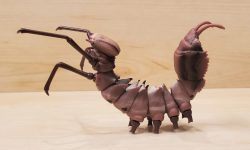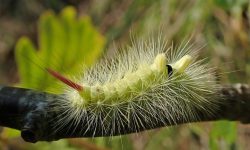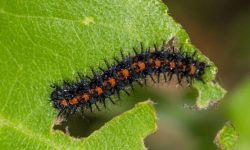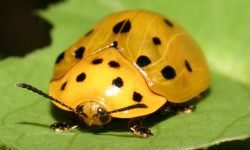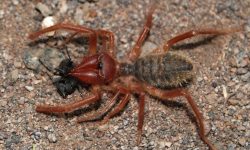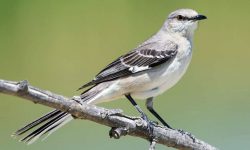Caterpillars that look like sticks are a fascinating phenomenon within the world of entomology. These remarkable creatures, often found in various ecosystems worldwide, have evolved unique adaptations to blend seamlessly into their surroundings. With their elongated bodies and often twig-like appearances, they effectively mimic the shape and color of the branches they inhabit, effectively camouflaging themselves from potential predators.
Different types of caterpillars that look like sticks
Small Phigalia Moth
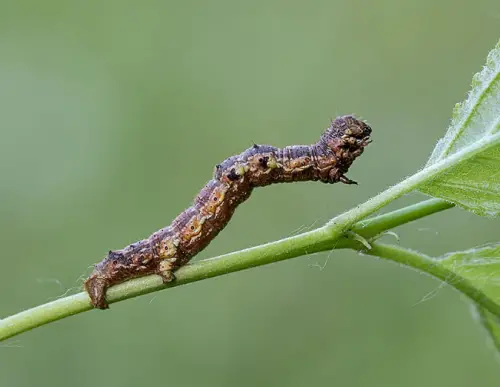
The Small Phigalia Moth, scientifically known as Phigalia strigataria, is commonly found in the woodlands of North America. Its primary diet consists of the leaves of various trees and shrubs, particularly those found in woodlands, such as the American Walnut and sugarberry. Additionally, this species also consumes blackberry and thornapple fruits.
Distinctive in appearance, the Small Phigalia Moth Caterpillar displays a range of colors including gray, green, and brown. Notably, when found on oak and maple trees, it exhibits a striking red-brown coloration. Its stick-like physique often renders it similar in appearance to the host tree, aiding in camouflage within its habitat.
The activity of Small Phigalia Moth Caterpillars varies by location, with those in Southern states like Texas being active from January, while those in other states typically emerge starting from March.
Blackberry Looper Moth
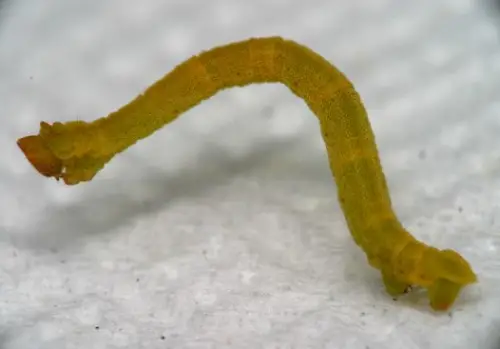
The Blackberry Looper Moth, scientifically identified as Chlorochlamys chloroleucaria, prominently exhibits a green hue, both in its adult form and as a caterpillar. Its stick-like physique, combined with its predominantly green appearance, serves as a distinguishing characteristic. Notably, this species boasts a unique dietary preference, primarily feeding on blackberry fruits, in contrast to other moth species. Additionally, it sustains itself by consuming the leaves of various plants, including wild roses, asters, and common bonesets.
This particular moth species is observed to undergo two generations annually. As the Blackberry Looper Moth Caterpillar progresses through its life cycle, it undergoes a noticeable transformation, gradually broadening in shape while retaining its green coloration before transitioning into the pupal stage.
Hemlock Looper Moth
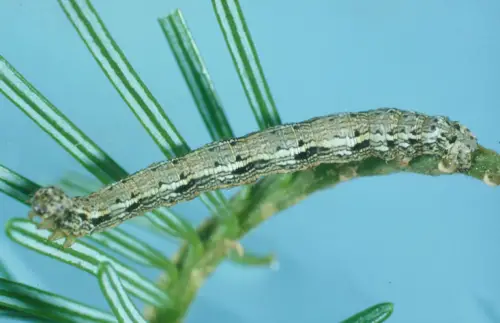
The Hemlock Looper Moth, known as Lambdina fiscellaria in scientific terms, poses a significant threat to hemlock trees. Resembling sticks in appearance, these caterpillars display varying colors corresponding to their developmental stages. During their initial growth stages, Hemlock Looper Moth Caterpillars are distinguished by their bright yellow hue, setting them apart from other species. However, as they progress toward their final growth stages, their coloration transforms into shades of brown and black.
In addition to hemlock, these caterpillars also consume vegetation from balsam fir and white spruce, particularly in the regions encompassing the Rocky Mountains.
One-Spotted Variant
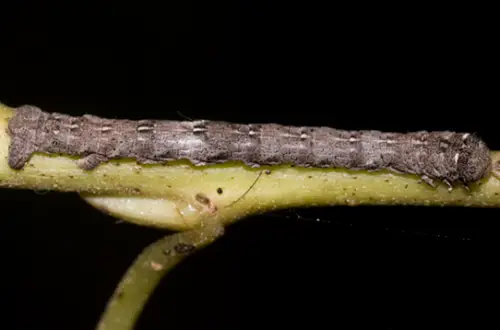
The native habitat of the One-Spotted Variant Caterpillar, scientifically known as Hypagyrtis unipunctata, primarily encompasses the southeastern states of the US. Distinguished by their brown or red-brown coloration, these caterpillars bear a striking resemblance to sticks in terms of their shape. Their diet consists of a variety of trees, shrubs, and fruit trees, with a particular affinity for wild plum species. Additionally, they are known to consume leaves from rose and maple trees.
The impact of these caterpillars is notably significant for delicate rose species, while their influence on trees like linden is comparatively less pronounced. Despite their ecological significance, the One-Spotted Variant Moths are rarely observed, as they are primarily active during the nighttime hours.
Common Gray
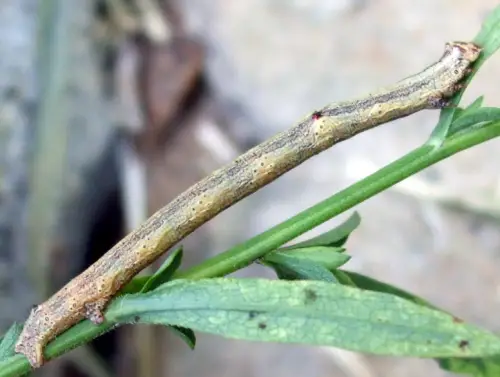
The Common Gray Caterpillar, scientifically classified as Anavitrinella pampinaria, bears a close resemblance to sticks, boasting a blend of gray, brown, and black hues in its coloration. Notably, this species features a distinctive flat face, making it relatively noticeable when attempting to remove caterpillars from trees.
Capable of causing significant harm and even defoliation to young trees, the Common Gray Caterpillar primarily targets deciduous trees as its hosts. However, it is also known to feed on fruit-bearing trees, with pear and apple trees ranking among the most heavily impacted species. Their detrimental impact is most pronounced during the month of August, when their population reaches its peak across North America.
Bent-Lined Carpet
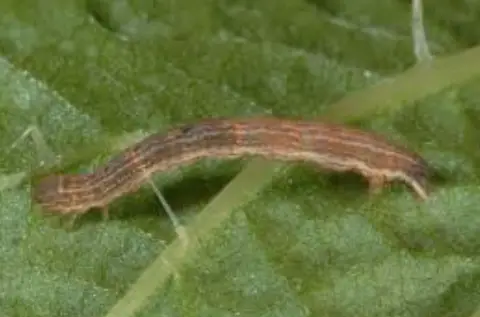
The Bent-Lined Carpet Caterpillar, identified as Costaconvexa centrostrigaria, stands out as one of the few stick-like species that diverge from the conventional diet of tree leaves. Instead, it favors shrubs and small plants, with knotgrass being a preferred choice. Characterized by its distinctive brown and dark brown coloring, this caterpillar distinguishes itself from other species by possessing a robust, wider, and shorter body, in contrast to the more common thin tubular form.
In its natural habitat, this caterpillar often maneuvers its way to the ground, where it seamlessly blends in with the surrounding vegetation. While there, it feeds on the leaves of the shrubs within its reach, contributing to its sustenance and development.
Sharp-Lined Yellow
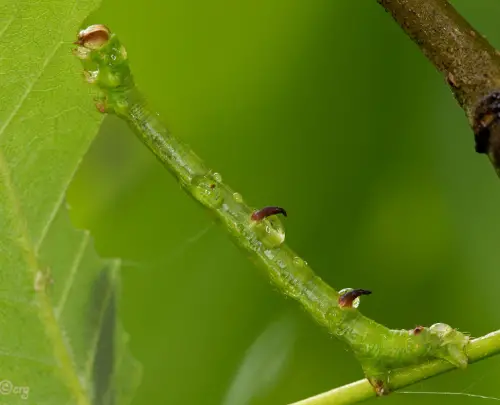
Sharp-Lined Yellow moths, scientifically recognized as Sicya macularia, prominently exhibit a yellow-dominant coloration in their appearance. In contrast, the caterpillars of this species feature a dominant green hue, often accentuated by the occasional presence of red spikes and small yellow sections. Resembling sticks in form, these caterpillars rely on their green coloring to blend in seamlessly with the leaves of trees, resembling newly-merged twigs.
Their diet primarily consists of the green foliage of deciduous trees, as well as those that shed their leaves seasonally. Alder trees are notably among the most common hosts of the Sharp-Lined Yellow Caterpillars. Additionally, this species can be found on various flowering shrubs, setting it apart from other similar caterpillars. Cinquefoil, a shrub adorned with yellow flowers, stands as one of the preferred host plants for this species.
Curved-Toothed Geometer Moth
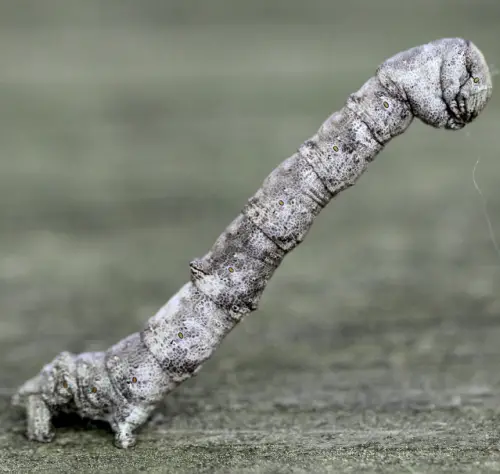
The Curved-Toothed Geometer Moth, scientifically referred to as Eutrapela clemataria, is known to inhabit a vast geographical range spanning from New York to Florida. Renowned for its unique defense mechanism, this species relies on its distinct coloring to confuse or deter potential predators, a tactic employed by both the moths and their caterpillars.
Resembling sticks in both form and color, the caterpillar of this species exhibits a characteristic gray, bark-like appearance, closely mirroring the tree bark of its common host plants, which primarily include willows and oak trees. In terms of physical attributes, the Curved-Toothed Geometer Moth is recognized for its small to medium-sized stature and notably short body.
Despite its feeding habits primarily consisting of tree leaves, this species of caterpillar does not exert a significant impact on the surrounding vegetation and is not commonly regarded as a pest.
Porcelain Gray
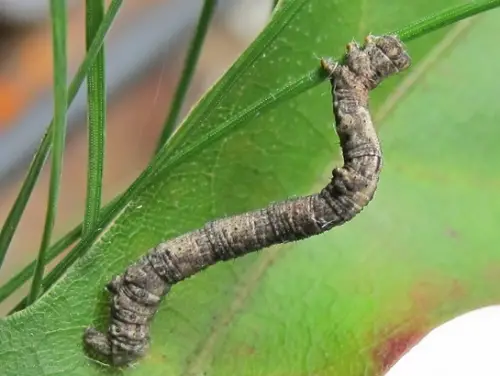
Protoboarmia porcelaria, the formal name for the Porcelain Gray, is distinguished by a unique gray appearance that closely mimics the shades of its host trees. In contrast to a few other species of caterpillar that resemble sticks, the Porcelain Gray is most known for its propensity to overwinter as a caterpillar.
In particular, this species overwinters shortly before reaching its last instar or growth stage, resurfacing in the spring after the bitter cold has passed. Remarkably, the mature Porcelain Gray caterpillar can grow up to 25 mm in length. This species is able to survive at different elevations because it consumes a wide variety of trees, such as spruce, oak, pine, and elm. In addition, some of its most widely recognized host plants are eastern cedar trees.
Small Engrailed
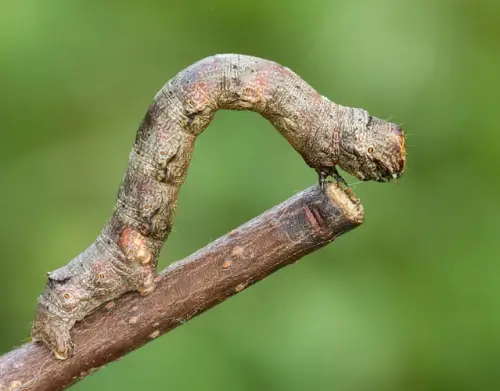
Scientifically known as Ectropis crepuscularia, small engrailed caterpillars are identified by their stick-like shape and wide range of colors. They have the amazing ability to mimic the colors of the branches they live in as well as the hues of tree bark, which they use as a defense against would-be predators.
Although the species is most frequently seen with a gray coloring, there have also been reports of a brown variant in North American locations. These caterpillars’ main food source is the leaves of different types of trees. Notably, the Small Engrailed Caterpillar most commonly uses fir, maple, and larch trees as hosts.
Woolly Gray Moth
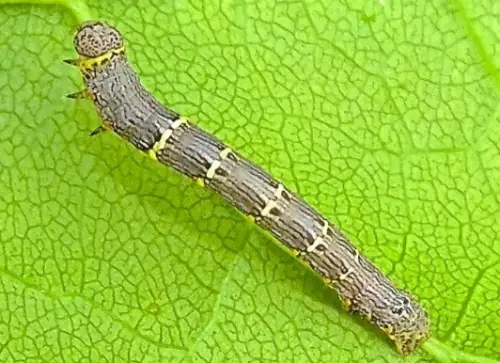
The Woolly Gray Moth, scientifically recognized as Lycia ypsilon, predominantly inhabits woodlands and orchards located in the Eastern United States. This species is notably characterized by its vivid and colorful stick-like appearance, setting it apart from similar caterpillars within the region.
In contrast to the predominant dark brown and dark gray hues exhibited by other stick-like caterpillars in the East, the Woolly Gray Moth Caterpillar showcases a striking combination of light brown, white, yellow, and red colors. The base color of the species remains a light brown shade, accentuated by the presence of distinct white, yellow, and red bands traversing its body.
As for its dietary preferences, this species primarily subsists on the leaves of various tree species. Notably, it is known to feed on the foliage of oak trees, as well as the leaves of fruit-bearing trees such as apples and pears.
Large Maple Spanworm Moth
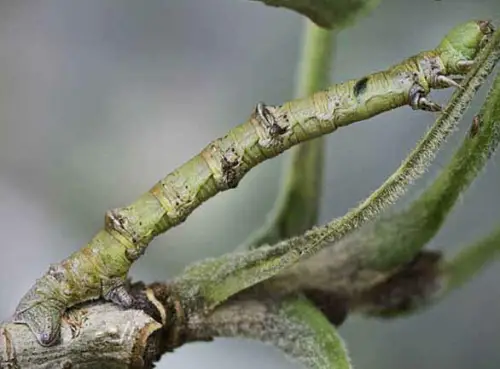
The Large Maple Spanworm Moth, known scientifically as Prochoerodes lineola, is native to various Eastern regions of North America, encompassing both the United States and Canada. Renowned for their remarkable ability to imitate leaves and sticks, these caterpillars seamlessly blend into their surroundings, with their brown and gray colors further enhancing their camouflage.
Notably, the prolegs of these caterpillars also exhibit the same brown coloring, contributing to their overall mimicry. Among their primary host trees, maple and oak stand out as the main targets for the caterpillar’s feeding activities. Additionally, the Large Maple Spanworm Moth is occasionally observed on apple, currant, and sweet fern trees, albeit to a lesser extent.
The species exhibits its most damaging impact on these host trees during the spring season and towards the conclusion of the summer.
Horned Spanworm Moth
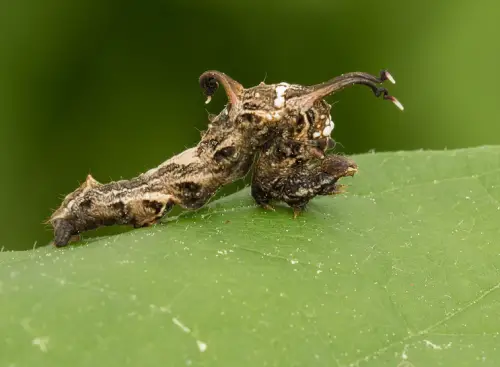
The Horned Spanworm Moth, scientifically identified as Nematocampa resistaria, is indigenous to various Eastern regions of North America. Notably, this species employs mimicry techniques throughout all stages of its life cycle. While adult moths imitate the appearance of dead tree leaves, the caterpillars emulate the form of sticks, utilizing these deceptive tactics as a means of protection.
Distinguished by their pale or faded colors, the Horned Spanworm Moth Caterpillar adopts a predominantly brown and dark brown coloration. It boasts an elongated, tubular body, reminiscent of an irregularly-shaped stick, contributing to its camouflage and shielding it from potential predators.
This species thrives on and feeds from trees such as pine, fir, and hemlock, utilizing these host trees as their primary source of sustenance and habitat.
Peppered Moth
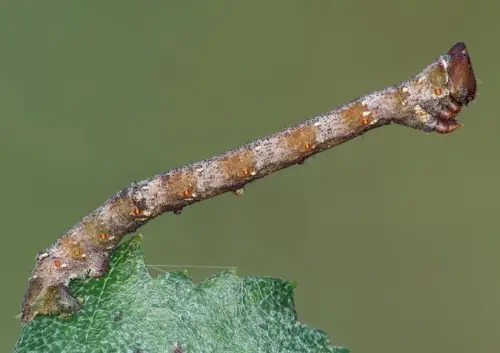
The Peppered Moth, scientifically classified as Biston betularia, is a native species found across North America and Europe, notable for its predominantly gray coloration. The caterpillars of this species exhibit a striking resemblance to sticks, although their specific coloring varies depending on their respective host plants. Research has revealed that Peppered Moths utilize their skin pigmentation to match the color of the host plants, enabling effective camouflage.
Consequently, the stick-like Peppered Moth caterpillars can adopt various colors, including black, gray, or green, based on the specific host they inhabit. Caterpillars situated on thicker and darker branches often assume darker hues, potentially even appearing black, while those located on emerging twigs display a green coloration, mirroring the appearance of the newly forming twigs.
Preferring tree hosts over flowers, Peppered Moth Caterpillars primarily feed on beech and willow trees, relying on these host plants as their primary source of sustenance.
Conclusion
These stick-like caterpillars come in a range of colors, from various shades of brown and gray to green, mirroring the hues of the vegetation around them. Some of these caterpillars use their color-changing abilities to match the precise shades of their host plants, ensuring their survival by evading detection.
Despite their stick-like appearance, these caterpillars play vital roles in their ecosystems, contributing to nutrient cycling and serving as a food source for various predators. Their remarkable camouflage strategies not only aid in their survival but also underscore the intricate and delicate balance within the natural world.
People Who Read This Also Read:

